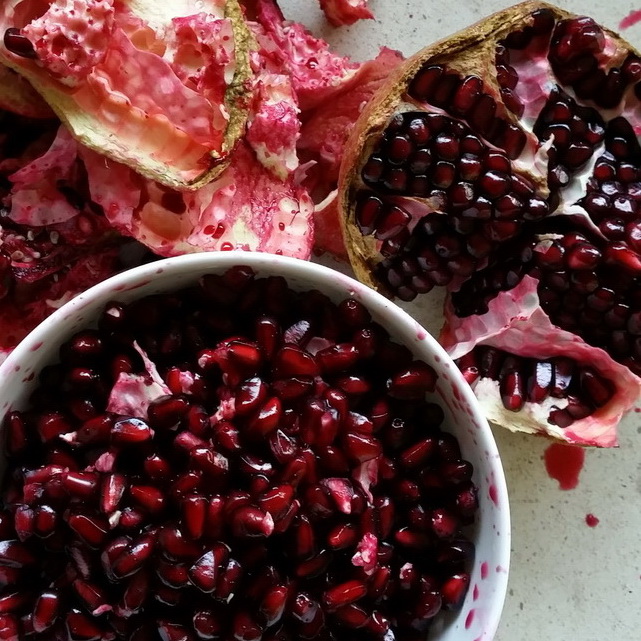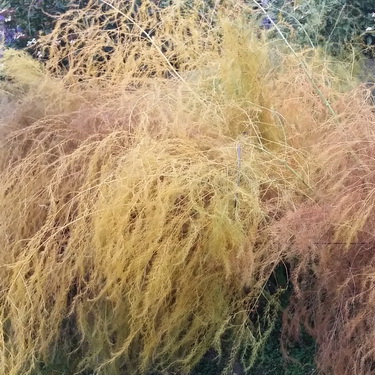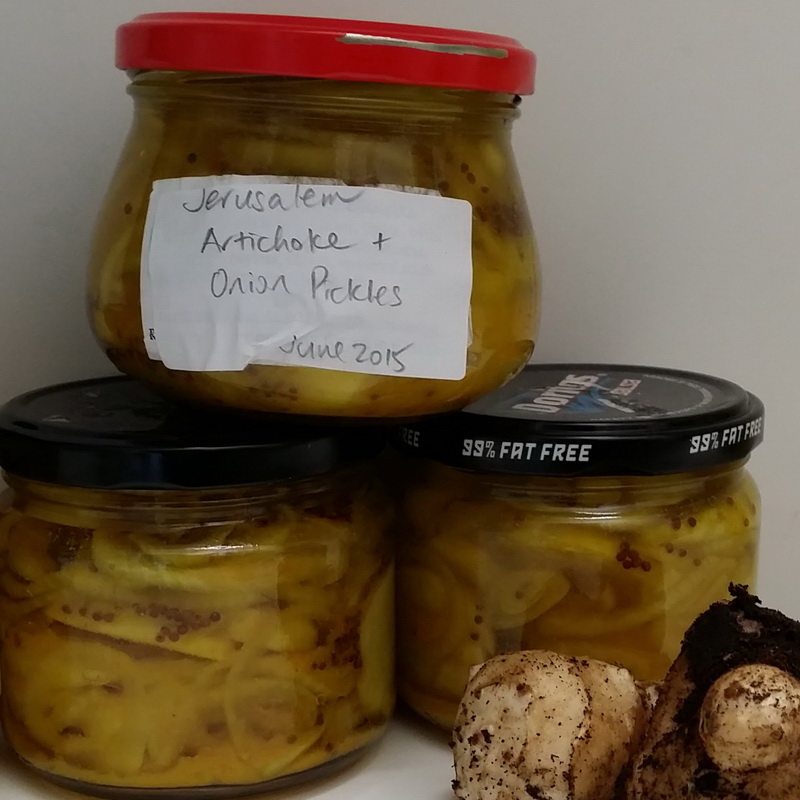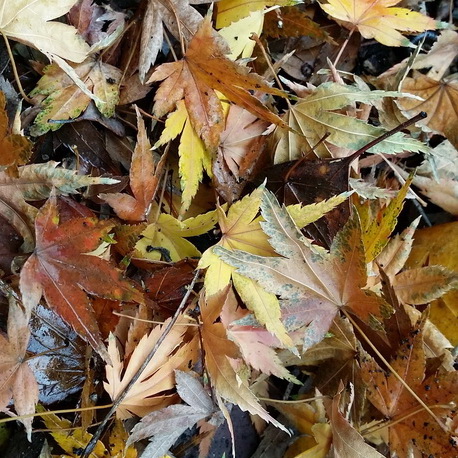
Pomegranate seeds

Yellowing asparagus fern
June in my productive garden and kitchen
Goodness me - how cold it has turned so quickly! After a very prolonged and lingering summer well into autumn, the sudden drop in temperature has brought on late autumn delights. The leaves on most deciduous trees have all but fallen except for a few (like my mulberry) that are slow to drop. I have been collecting heaps and not just from my own garden. It's hard to drive by all those piles of leaves without stopping to collect bag-loads! The leaves help to make wonderful compost and leaf litter.
June in Melbourne is not the most productive for planting, at least not in my seriously sunlight-challenged produce garden. Good time instead to cook up some delicious and warming food on those colder days, but when the weather is more conducive, there is plenty to do outside.
- Asparagus Time to cut back the asparagus fern to the ground, which has yellowed as expected and then top dress the plants with my usual combination for my produce plants: homemade compost, aged cow manure and some chook fertiliser pellets added for good measure. With rain over winter all of this goodness will seep into the soil to feed the asparagus and we should be harvesting again before too long. Yum!
- It’s time to plant rhubarb but I don’t need anymore. Instead, I might be looking at dividing it as my clump of plants is crowding out its space. If I can’t find somewhere else to plant it, I’ll pot it up to give away at vegie swaps.
- Some of last year’s garlic plaited to use and eat is starting to sprout. I don’t want to plant it as the cloves weren’t large but they are still good to eat, even if sprouting. You can even plant a mass of the smaller bulbs to use the green leaves as a spring onion substitute. I can also freeze the whole bulbs as individual (unpeeled) cloves as this stops the sprouting and the garlic is still great to use from frozen. It even peels more easily.
- Too early to plant but I want to find some decent space to grow potatoes. Last year I planted them in the soil as I found some space and they produced beautifully. I will need seed potatoes for them to ensure disease-free stock. If I can't find bed space, I might start up a potato tower.
- Do a winter tidy up of shrubs and use the clippings to add to putting together another fast compost heap. If started up early over winter the finished compost could be ready to use for the spring plantings. I have been collecting coffee grounds by the bag load from local cafes, there are sackloads of chook poo and wood shavings and autumn leaves galore to put together to make a lovely hot mix.
- Now that the fruit trees are shedding leaves, it is time to have a good look at the trees. My winter pruning consists mainly of removing deadwood or any diseased branches and mummified fruit. A hard prune at this time of the year actually results in more vigorous growth when they come out of dormancy, so is counter-productive if you want them to stay manageable.
- As daylight hours become shorter so the garden becomes slower. In the vegie patch, things are slowly chugging along, noticeably better where they get some sunshine. We are harvesting plenty of rocket and coriander and the peppery mustard greens, like Mizuna, that add zing to a salad; some leaves of lettuce plants and bok choy; and the silverbeet that was allowed to self-seed is coming up beautifully. I will give the vegies an occasional seaweed pick-me-up and some worm wee fertiliser but I have to be patient!
- Peas and snowpeas can go in. Snow peas do well in pots, as long as you provide support for them and a lovely rich potting mix, but for great productivity, into garden beds is the way to go.
- I have never planted turnips, so will try sowing some seeds directly into prepared beds this season. They are a root vegetable so don't take well to being transplanted out of punnets, so it's direct sowing for them.
- Time to remove any protective netting that I was using to safeguard the brassica and Asian green plants from the Cabbage White Moth and its hungry progeny, the caterpillars. As the weather has cooled enough, the moths or butterflies no longer pose a problem.
So, still plenty to do but the frenetic activity of autumn has eased and gives me a spell to enjoy before it all starts up again in spring!
IN THE PRESERVING KITCHEN
- Jerusalem Artichoke pickles are easy to make and have a great crunchy texture. I have enough to possibly market them!!
- It's time for black olives so some more soaking or salting of olives before preserving them. Black olives have a much softer texture than green so curing techniques do vary.
- Pears are in season and so I may make some Pear & Vanilla Jam, a family favourite.


